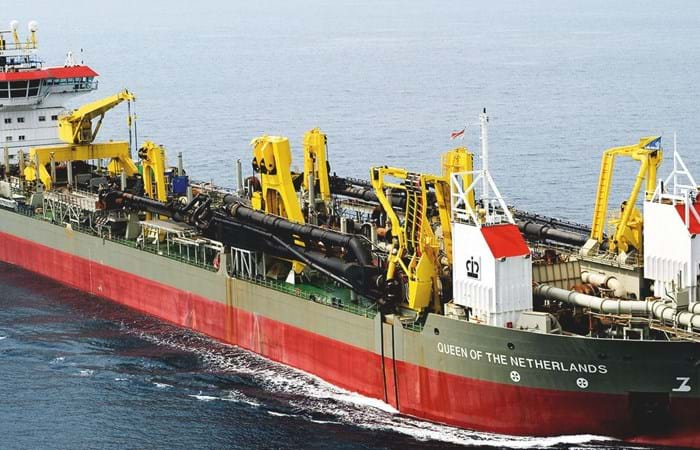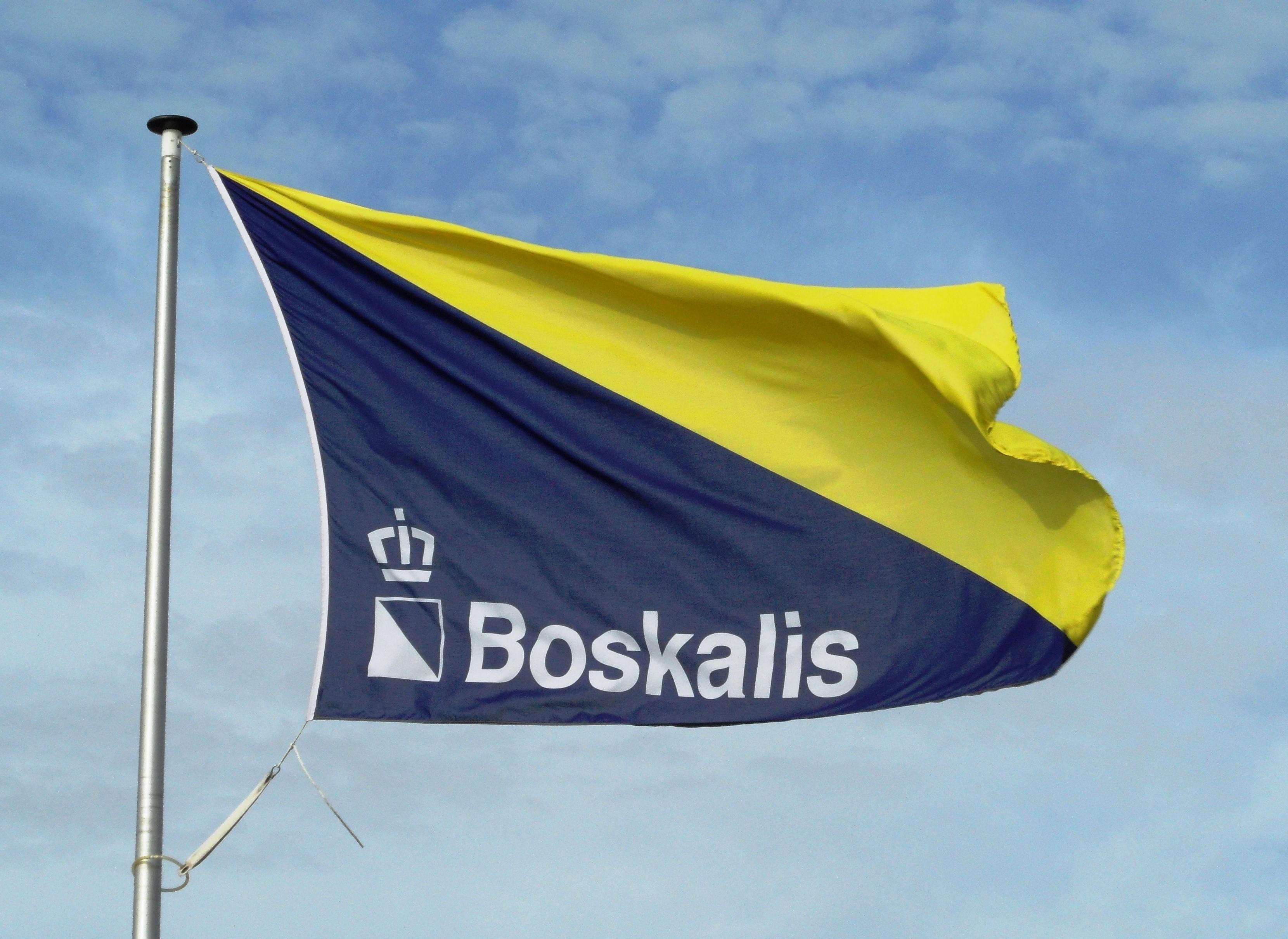The trailing suction hopper dredgers (TSHDs) of Boskalis are oceangoing vessels that can collect sand and silt from the seabed and transport it over large distances. Boskalis deploys trailing suction hoppers dredgers for the construction and maintenance of ports and waterways as well as land reclamation and coastal defense and riverbank protection.
Trailing suction hopper dredgers are equipped with one or two suction pipes ending in drag heads. The drag head moves slowly over the bed collecting the sand like a giant vacuum cleaner. The mixture of sand and water is pumped into the hopper of the dredging vessel. Excess water flows out through so-called overflows. Dredging stops when the maximum hopper capacity is reached.
The vessel can discharge its load in various ways, depending on the project specifications.
One method used is rainbowing. Rainbowing is used when the vessel can get close to the discharge location and the previously reclaimed sand body is above or almost above the surface. The sand is sprayed through a nozzle in the bow rainbowing in an arch through the air.
Another discharge method consists of pumping the sand ashore by floating or sunken pipelines. This approach is used for example in land reclamation or coastal protection projects. The sand is pumped through floating pipelines into the reclamation area.
The sand can also be deposited through doors located in the bottom of the vessel.
Boskalis has around 21 trailing suction hopper dredgers, including two of the world’s largest, the Queen of the Netherlands and the Fairway.

